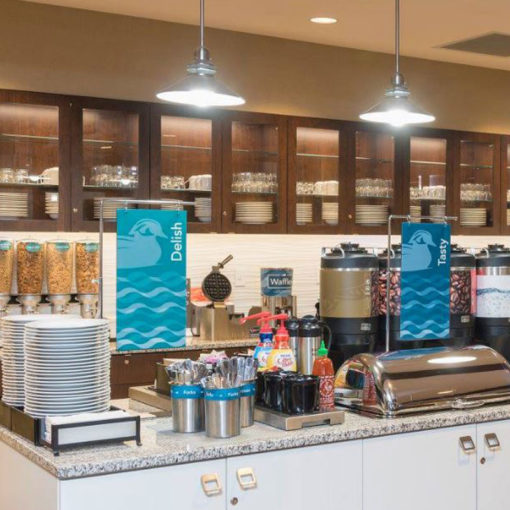The Difference Between Hospitality Designers and Other Designers
When starting a new hotel project, choosing the right design team is one of the most critical decisions. While all designers bring creativity and technical skills to the table, hospitality designers specialize in crafting spaces that cater to hotels’ unique demands, balancing aesthetics, functionality, brand requirements, and guest experience.
In this blog, you’ll learn six core differences between hospitality designers and other designers and why partnering with hospitality experts can elevate your project and maximize your investment.
#1: Overall Focus
Hospitality interior designers focus on creating a welcoming environment full of comfort and utility for guests that also aligns with the hotel’s brand and operations. A hotel’s primary concern is the guest, so a hospitality designer’s goal is to evoke emotions and create memorable experiences.

By contrast, commercial designers are constantly looking for ways to enhance productivity, efficiency, and employee well-being and designing spaces for specific tasks and workflows. They are used to designing with employees, clients, and visitors in mind and creating a professional atmosphere for them.
In essence, while commercial and hospitality interiors both aim to create functional and appealing spaces, commercial interiors prioritize productiveness and professionalism, whereas hospitality interiors are more about comfort and guest experience.
#2: Branding
Each hotel brand incorporates certain design elements that establish its identity, personality, and story. Each brand typically uses a design vocabulary that differentiates it from another and combines styles and aesthetics to enhance the guest experience.
In corporate settings, designers create elements that emphasize functionality, the company’s own branding, and building a workplace identity.
#3: Materials and Furnishings
In commercial design, materials and furnishings tend to be highly durable to withstand daily wear and tear. With the employees in mind, commercial designers emphasize ergonomics and practicality.
In contrast, residential designers can bypass sturdiness, longevity, traffic flow, and even functionality when considering materials or products. These concepts are often very low on the priority list when making a house, condo, or apartment a home.
Materials and furnishings in hospitality design often feature high-quality, aesthetically pleasing materials and construction. Hotel FF&E prioritizes comfort and visual appeal, contributing to a specific ambiance, while also being geared to hold up under the stress of daily guests.
#4: Experience and Specialization
Because of their many years of specialization in the field, hospitality designers can provide customized solutions when creating functional and appealing spaces. They also have the resources to make appropriate selections for a hospitality project and are well-versed in the latest trends, materials, and contract grade manufacturers used to design hotels and resorts.
Other designers may have experience and specialization in their respective industries, but much of that knowledge doesn’t carry over to a hospitality project’s specific considerations and needs. The vendors involved in residential or commercial also can be very different than in hospitality.

#5: Collaboration
Collaboration with stakeholders such as architects, engineers, FF&E producers, general contractors, lighting designers, food and beverage consultants, and millworkers is a significant part of a hospitality designer’s job. This collaboration requires adherence to building codes, safety regulations, and accessibility guidelines, critical to creating a safe and compliant environment for guests and staff.
Other designers are likely unfamiliar with the nuances of hotel projects, including ADA requirements, which increases the risk of costly delays, mistakes, and violations.
#6: Space Planning
When determining the layout and arrangement of FF&E to optimize functionality, flow, staff efficiency, and guest comfort, hospitality designers consider factors other designers don’t. Guest accessibility and safety are two concerns vital to any hotel space planning exercise that can be very different for a commercial designer or non-existent for a residential designer.
In summary, hospitality designers choose appropriate materials, fabrics, finishes, lighting fixtures, furniture, and decorative elements that align with the design concept and meet the practical durability requirements of a high-traffic environment. They also must create or at least incorporate the brand narrative and design direction. We recommend that you leave these unique responsibilities to a designer who is dedicated to hotels.
ID Studio is a team of experienced hospitality designers ready to make your next hotel project successful. Contact us to see if we’re a fit!



